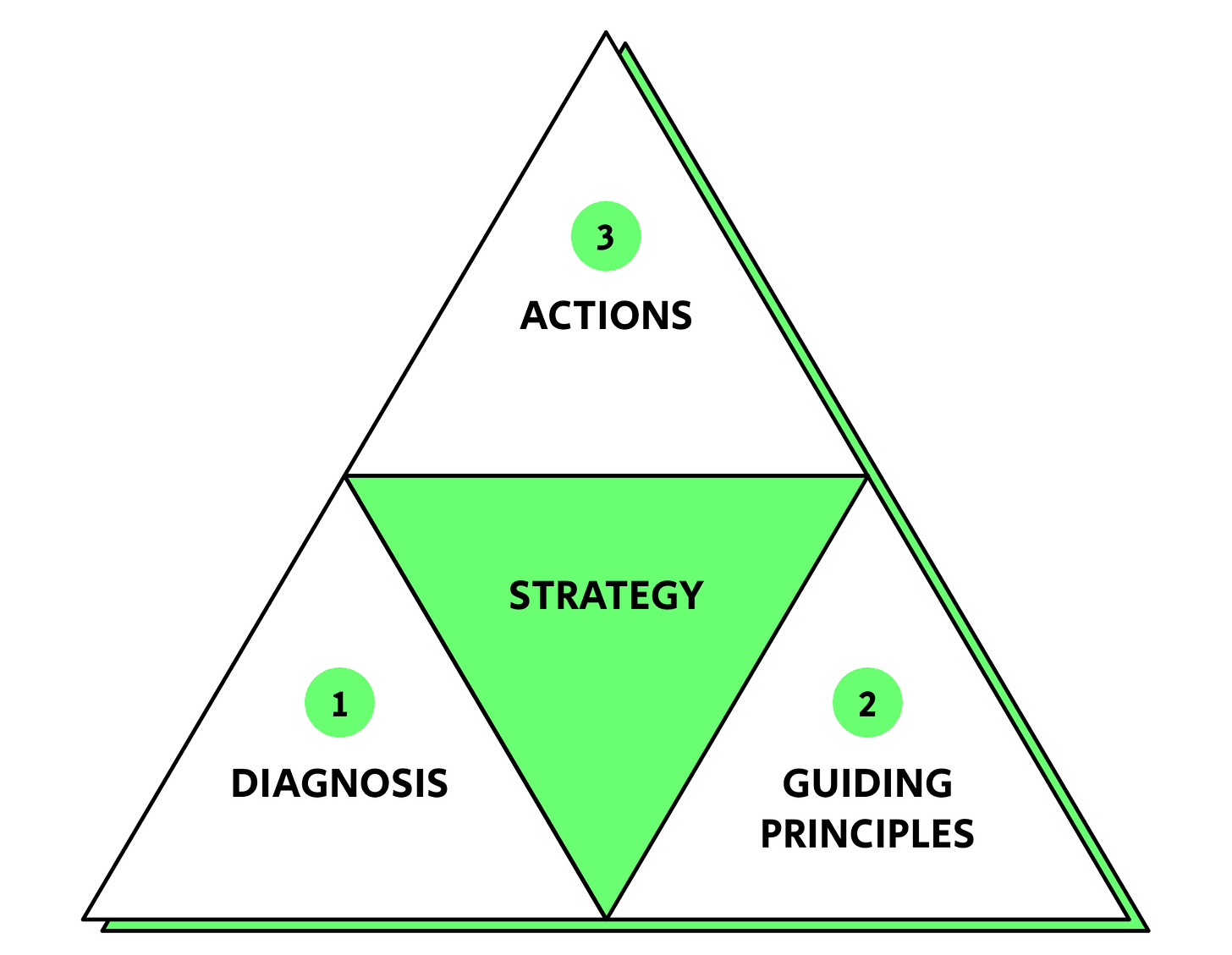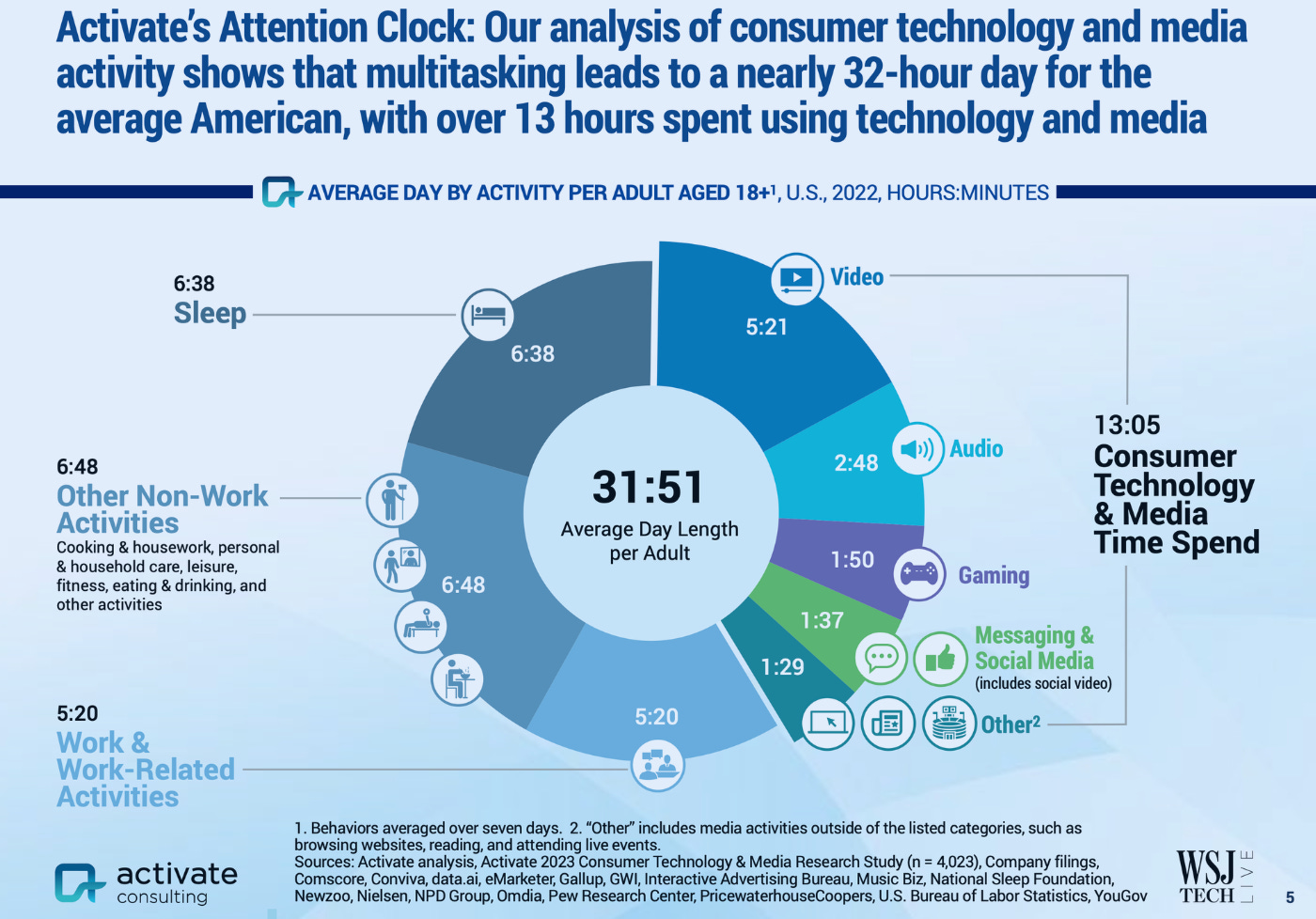🔑 Visions as the key to strategies
How important are visions in marketing strategies? How do sustainable brands such as Oatly, Too Good To Go and Patagonia use this guideline for strategic growth?
Hi 👋 I’m Florian Schleicher. This is the FutureStrategies newsletter of FUTURES. Thank you so much for reading along 💚 If you want to learn strategic marketing from me, then my Simple & Sustainable Marketing Academy is the perfect fit for you.
What is the key to a successful marketing strategy?
There is one thing that drives success and enables you to stay on track.
In general, a good marketing strategy consists of three elements:
A diagnosis that describes the situation we are currently in.
Guidelines that show us the direction we want to take.
Actions that make our plans a reality.
Today I would like to share my experiences on a specific sub-area of the guidelines. They consist of two sub-areas:
A vision and/or mission that guides us.
Several goals that help us to turn this desirable image into reality.
Strategist and author Richard Rumelt describes the guidelines in his book Good Strategy, Bad Strategy:
“(… it) specifies the approach to dealing with the obstacles called out in the diagnosis. It is like a signpost, marking the direction forward but not defining the details of the trip. A good guiding policy tackles the obstacles identified in the diagnosis by creating or drawing upon sources of advantage. Indeed, the heart of the matter in strategy is usually an advantage.”
Today we are looking at this heart - the vision and mission.
🤷 What is a vision - what is a mission?
🧩 What does a good vision consist of?
⭐️ Why do we need a good vision?
✳️ What are good visions of sustainable brands?
💡 What does this mean for your brand?
🤷 What is a vision - what is a mission?
I often experience a lot of confusion about what a vision is and what the mission is. That's why I'll keep it simple here:
The vision answers the question: WHY?
The mission answers the question: HOW?
To classify - only the actions answer the question: WHAT?
The vision is therefore the most long-term element of a strategy.
A concrete example
The vision of Disney is:
“To be one of the world’s leading producers and providers of entertainment and information.”
The vision thus answers why Disney does what it does.
Their mission is:
“To entertain, inform, and inspire people around the globe through the power of unparalleled storytelling, reflecting the iconic brands, creative minds and innovative technologies that make ours the world’s premier entertainment company.”
So the mission answers the question of how Disney works.
Another example to differentiate:
Mastercard's vision is:
“We work to connect and power an inclusive digital economy that benefits everyone and everywhere.”
Their mission is:
“We do that, by making transactions safe, simple, smart and accessible.”
🧩 What does a good vision consist of?
The vision fulfills the most important function.
It motivates us to move forward with our strategy.
Like in this exceptional example:
It is an engaging, optimistic, courageous, and authentic idea of where our brand and our marketing can take us.
Just as a North Star used to show sailors where they had to sail to reach their destination, the vision guides us to the destination of our brand and our company.
“This is a clear singular statement about what the brand stands for at its core. It’s the explanation of why this brand will matter to people.”
Emily Heyward in Obsessed
A good vision goes one step further and combines a desirable future with our own values and the purpose of our company.
The greatest difficulty lies in creating a concise and memorable vision with so many things to consider. Because the vision should guide us in all the decisions we have to make in marketing.
My little tip here:
I write a vision as if each word would cost a thousand euros - so be as economical as possible.
One exercise I like to do at the start is to consider where the brand should be in 10 years.
Why 10 years?
This time horizon makes us really detach ourselves from the here and now and as Jane McGonigal writes in Imaginable, we see everything more from an external perspective - we become "emotionally unstuck" - because 10 years is so far away and we can therefore imagine more of what might be.
“In scientific language, we “reduce our egocentric biases” and become “less ego-identified” - which means we get out of our own heads and can start to see things the way someone else might.”
Jane McGonigal
For this we need imagination.
We need to be able to imagine what a desirable future might look like. In other words, a state of a "clear future" - as described in the picture here:
I once read a really good example of an emotional, trend-setting, and clear vision of Harley Davidson:
We are the only motorcycle manufacturer that makes big, loud motorcycles for macho guys (and "macho wannabes") mostly in the United States who want to join a gang of cowboys in an era of decreasing personal freedom.
That is a vision that speaks. Images immediately arise in your mind and it becomes clear WHY Harley Davidson manufactures and sells motorcycles.
⭐️ Why do we need a good vision?
You may now be thinking that you have a clear picture in your head and don't need to write it down. I often hear this from start-ups in particular in my coaching sessions - it's better to invest time in the execution than in the basis - the heart of the strategy, because it doesn't sell directly.
This can work, but it can also go wrong.
The task of really defining a vision, putting it into concrete words, and formulating it is an essential step in a successful marketing strategy.
Especially in teams, it is important to have a common vision and a common understanding of it. Otherwise, everyone will run in a slightly different direction. One centimeter of deviation leads to kilometers of difference in positions within several months, causing confusion among the target group.
And we want to avoid this at all costs.
After all, consumers' attention spans are constantly decreasing and our ubiquitous multitasking means that fewer and fewer (marketing) messages can be absorbed.
Our average day now has almost 32 hours - because we pack so much into the same amount of time:
“As consumers, we have a lot on our plates. From the moment we wake up, we're plagued with decisions, options and suggestions. There is effectively no limit to where advertisers can reach us, leaving us in a state of "shopping* nearly 24/7. Now that we can shout to Alexa to order wet wipes while elbow deep in a dirty diaper, or apply for a mortgage while waiting for an oil change, consumer expectations have evolved.“
Jeff From in The Purpose Advantage
We make around 35,000 decisions a day - what to wear, which coffee to have, which email to answer first. Each of these decisions takes away our mental capacity and we get tired. We don't want to have to make any more decisions.
According to psychologist Timothy Wilson, we can only consciously perceive 0.0004% of all the information that comes our way.
So if a brand gives us different directions, in case of doubt we prefer not to decide at all.
That's why we must have a clear vision of where we want to go. Otherwise, our target group will certainly not make it.
Do you want to set up your marketing strategy for long-term success?
That's exactly what I specialize in at FutureS.
And a vision helps with another point that fits in here:
It helps us to make decisions in everyday life.
✳️ Good visions of sustainable brands
When I was Head of Marketing at Too Good To Go, I had to make a lot of strategic implementation decisions every day.
The start-up's clear vision helped me with this:
“We dream of a planet without food waste.”
With every big and small decision, I was able to come back to it and ask myself which option would best help us achieve this image.
Finally, I would like to show you three visions of great sustainable companies to inspire you how the company's purpose can be combined with a "green" mission statement:
Patagonia
I also really like Patagonia's vision, here mixed with a mission:
We protect our home planet. We do this by building the best product, providing the best service and constantly improving everything we do.
The best product is useful, versatile, long-lasting, repairable and recyclable. Our ideal is to make products that give back to the Earth as much as they take.
BOOM - what an amazing guideline.
By the way, I wrote more about the magic of Patagonia's marketing and why they are so sustainable here.
Oatly
Oatly also has a strong vision that guides its marketing:
We will make it easy for people to eat better and live healthier lives without recklessly taxing the planet’s resources.
Oatly stands for revolutionary communication, something that is a good example of this vision. I also talked about this in the podcast interview with their Head of Marketing Christian Stegemann:
New Belgian Brewing Company
Another example is a brand that perhaps not all of you know.
The New Belgium Brewing Company, which produces America's first certified CO2-neutral beer.
Their WHY is very specific and gives context:
We believe business should be a force for good. Climate change is one of the most pressing issues of our time. It poses an urgent threat to our coworkers, our customers, and our communities – not to mention the beer we all love to drink - and we are using every tool at our disposal to protect the only planet with beer.
That’s why we push forward solutions to the biggest social and environmental challenges of our time.
My favorite part is "to protect the only planet with beer". That's their drive in a nutshell and the vision helps them to prioritize and make clear decisions.
💡 What does this mean for your brand?
Carl von Clausewitz, one of the greatest historical strategists, said in the 19th century:
“The talent of the strategist is to identify the decisive point and to concentrate everything on it, removing forces from secondary fronts and ignoring lesser objectives.”
This focus on a key aspect of our challenge - which we must identify and filter out in the diagnosis - is the central element of any strategy.
Most "marketing strategies" are a list of actions.
Sometimes some goals are even set.
But very few strategies help us to achieve an ambitious vision of the future.
A good strategy, driven by a clear, bold, and emotional vision, creates a solution and thus a competitive advantage over our competitors.
This vision acts as an inner drive: it is always with us. Not always visible. We don't communicate it directly to the outside world. But it is at the heart of our organization and our brand and, blow by blow, it helps us to overcome challenges and brings us closer to our goal:
A future that we want to shape.
Do you already have this vision for your brand?
Thanks for reading!
PS: You can also read this Posting in German.











